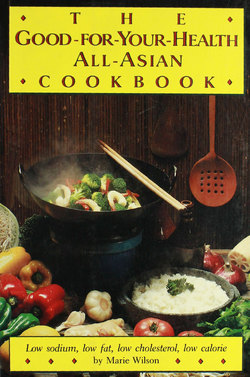Читать книгу Good for Your Health All Asian Cookbook (P) - Marie Wilson - Страница 14
На сайте Литреса книга снята с продажи.
ОглавлениеRecipes and Their Nutrient Values
The computer analysis for calories and for fat, cholesterol, and sodium content that follows each recipe is for one serving. These counts are for the basic recipe and do not include the optional ingredients unless stated. For example, if a recipe calls for green beans and says that carrots may be substituted, the analysis is for green beans. If the recipe says it will yield 4-6 servings, the count is based on the first number, that is, 4, unless otherwise stated.
All of the figures have been rounded up to the nearest 5 or 10 milligrams, and to the nearest one-half gram. In reading these figures, you will find a difference between the total fat in a recipe and the sum of the values listed for saturated and polyunsaturated fats. This is because there are other fatty acids in the food that are not included in the nutrient analysis.
All of these nutrient values should be regarded as estimates. There are often minor (but sometimes major) discrepancies from one source to another as well as variations in the foods themselves. For example, the actual amount of fat in the preparation of chicken could vary with the quality of the meat and how much care you take in removing the skin and the fat. As for sodium values in Asian condiments, there is a tremendous disparity from sample to sample and brand to brand. Still another consideration is the fact that most Asian foods are served on large platters that are placed in the center of the table, and that diners freely help themselves from these platters. This makes the notion of an exact analysis for a single serving even more imprecise than it already is, since how big a "single" serving is depends upon the diner's appetite at the time. Under these conditions, the analyses can be but approximations at best.
Please note that the nutrient analysis for meats, chicken, and fish is based on only the leanest portions. For example, if a recipe calls for fillets offish,the analysis is for a lean fish such as sole, not for a more fatty variety such as salmon, and the figure used is an averaged, rounded-up figure.
Sources for the data given in the nutrient computer analyses can be found in the section titled "Major Sources for the Nutrient Content of the Recipes" found in the back of this volume on page 335.
